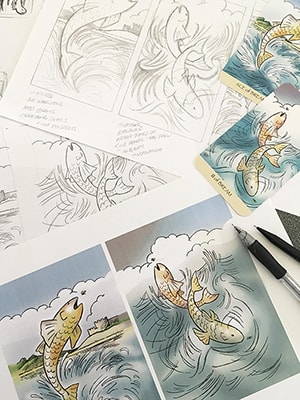What is Tarot?
 Produced by kind permission of Pete Glazier.
Produced by kind permission of Pete Glazier.The truth of the matter is that the exact origins of Tarot remain a mystery to this day.
There are many, many theories which link the origins of the cards to Egypt, China, and India with thoughts that they arrived in Europe during the middle ages via gypsies or nomadic people. It is interesting that so many ancient cultures can trace a connection to these cards and, perhaps, that is why their usage, to this day, remains popular across so many countries of the world.
The cards were used, initially, not only as playing cards but also as a tool for fortune telling and it is the fortune telling aspect that the Tarot cards are known for in the modern world.
There are 78 cards within the Tarot deck and this is separated into two distinct parts.
The first 22 cards form the Major Arcana and they tell the story of life from conception, through the myriad of events which take place throughout life, until we reach the successful completion of those events.
The following 56 cards, or the Minor Arcana, provide a little more by way of details to those events. The how, why and wherefore if you prefer and they help us to understand a little more about what is happening within our own lives.
If you work with cards yourself you will know the instinctive 'feel' as you handle the cards and if you go to a card reader you know that they will ask you to shuffle the cards until you 'feel' satisfied that you have shuffled them enough. So there is very much a connection between you and the cards.
From there the cards will either give you their 'message' or, if you are with a card reader, the 'messages' will be given to you.
The cards should never, never be used to manipulate or to cause distress. They are there as a friendly guide to help, support, and entertain.
I sincerely hope that you enjoy your Tarot card experience and, hopefully, very much look forward to meeting you.
Blessings,
Karen